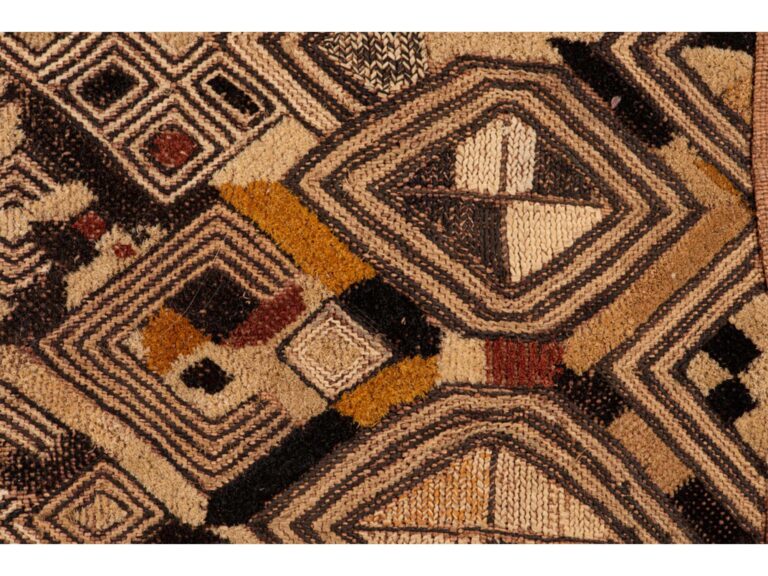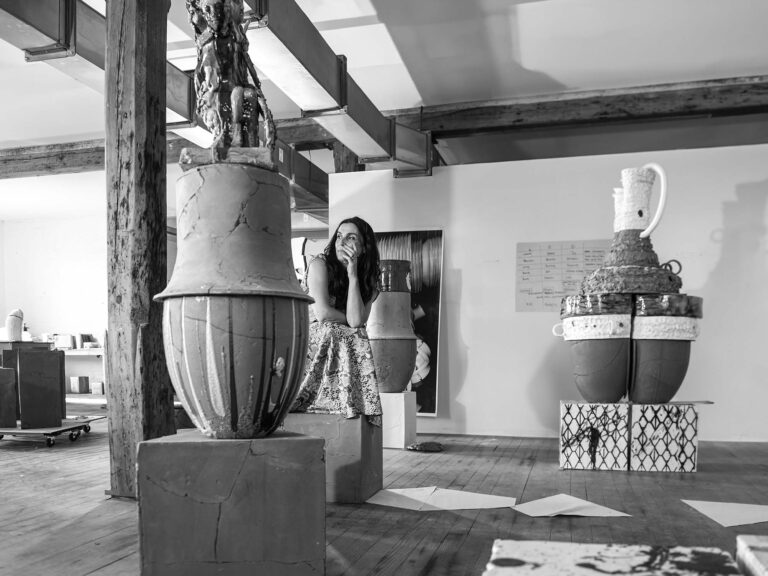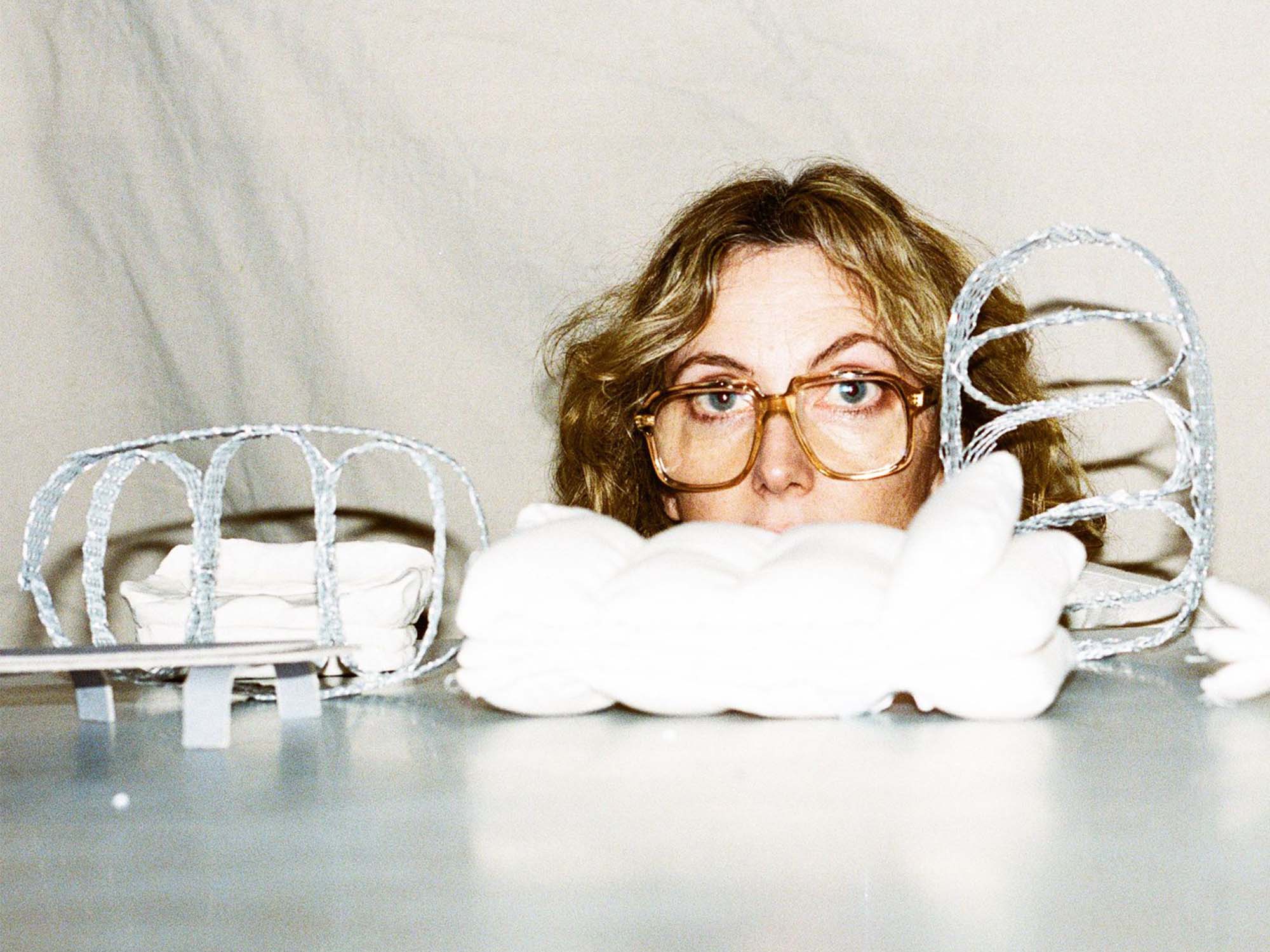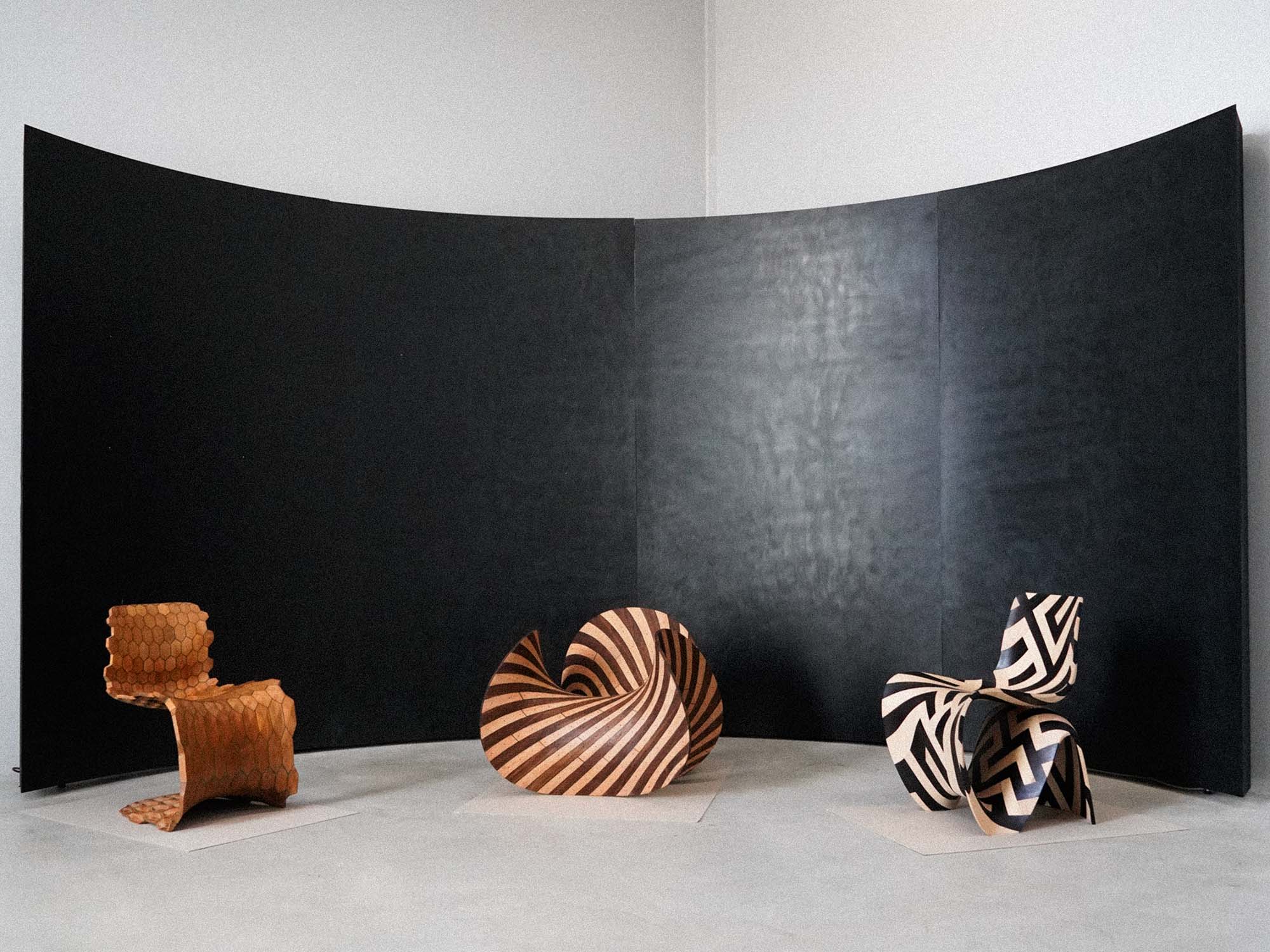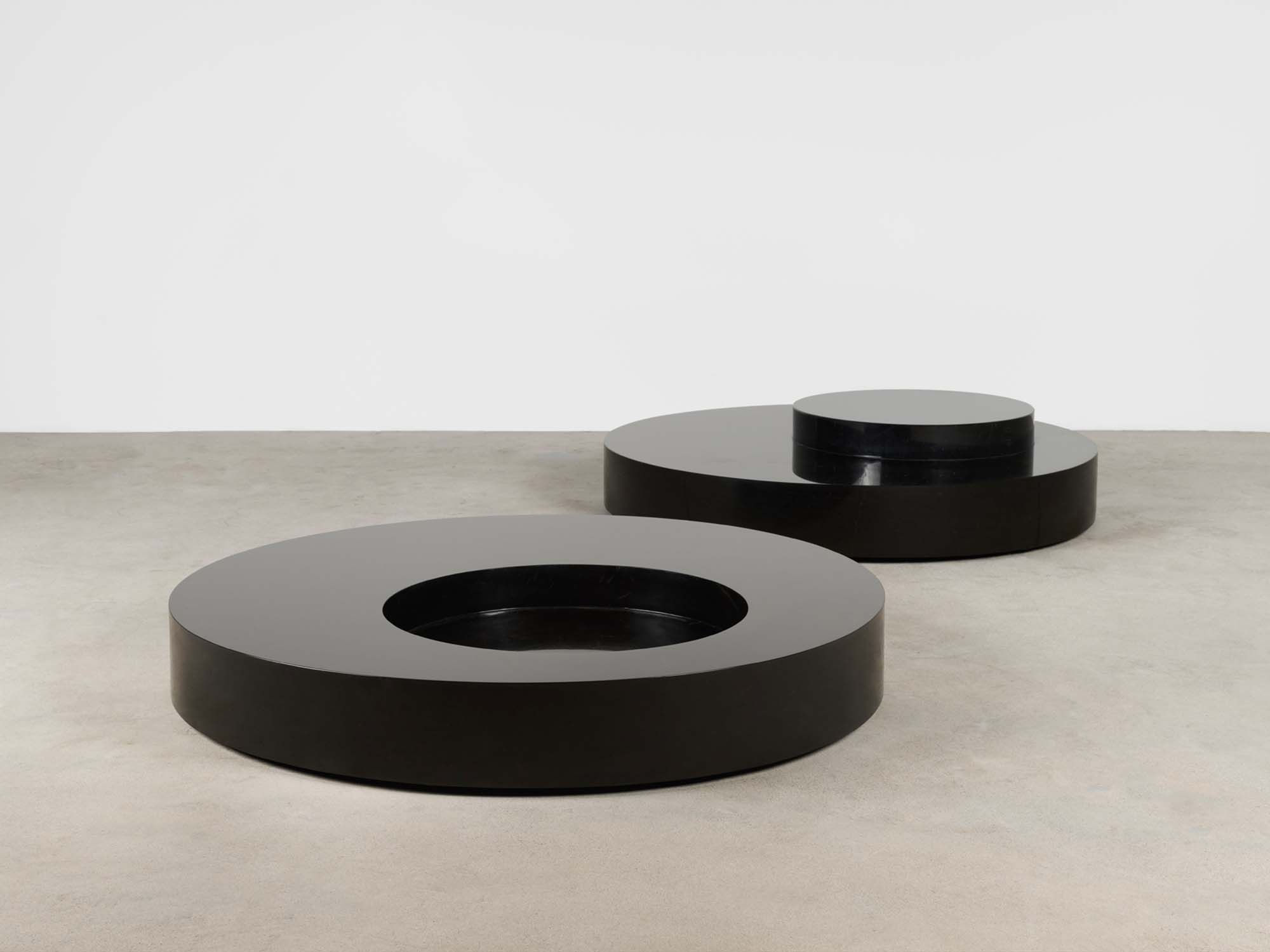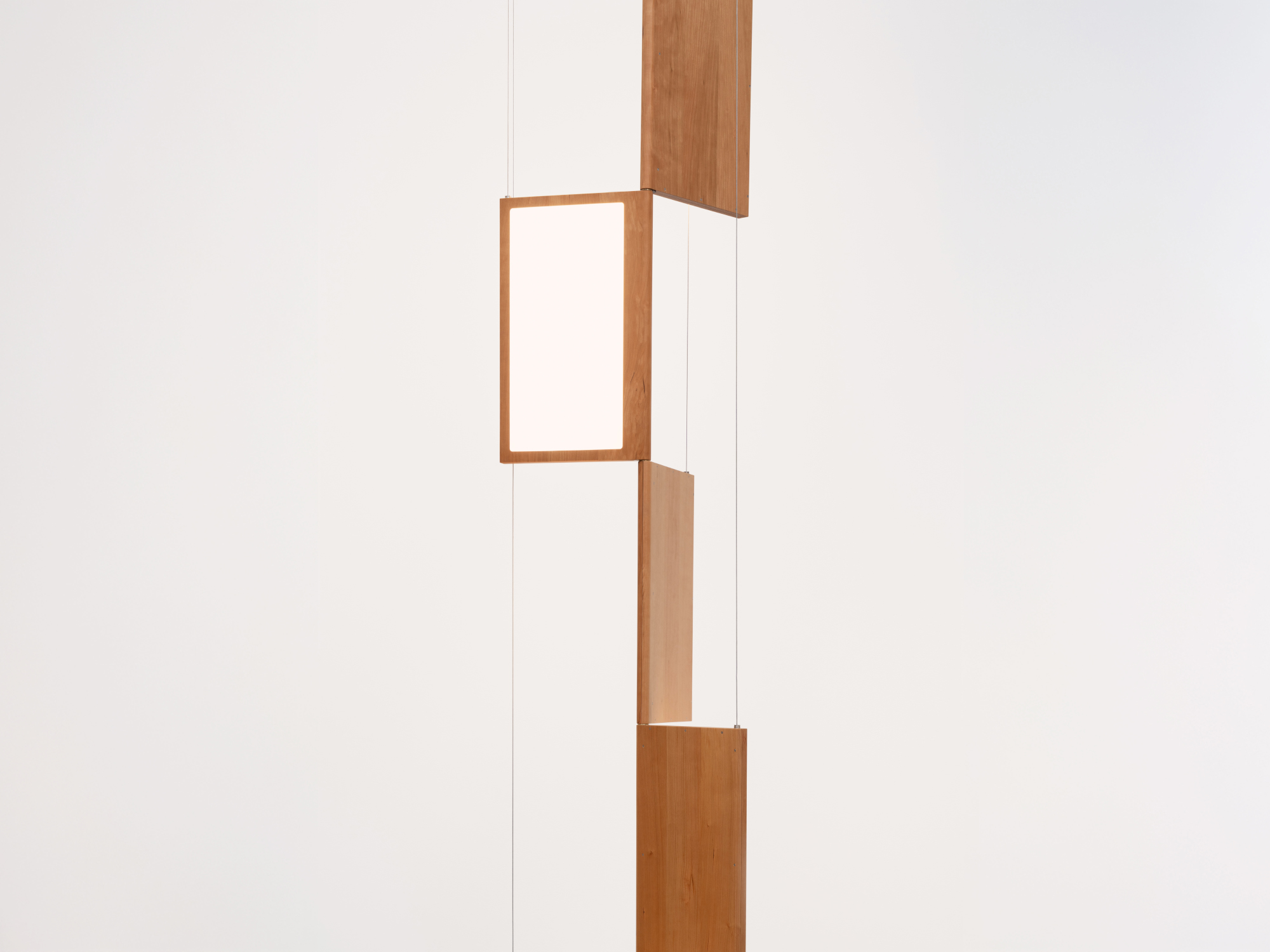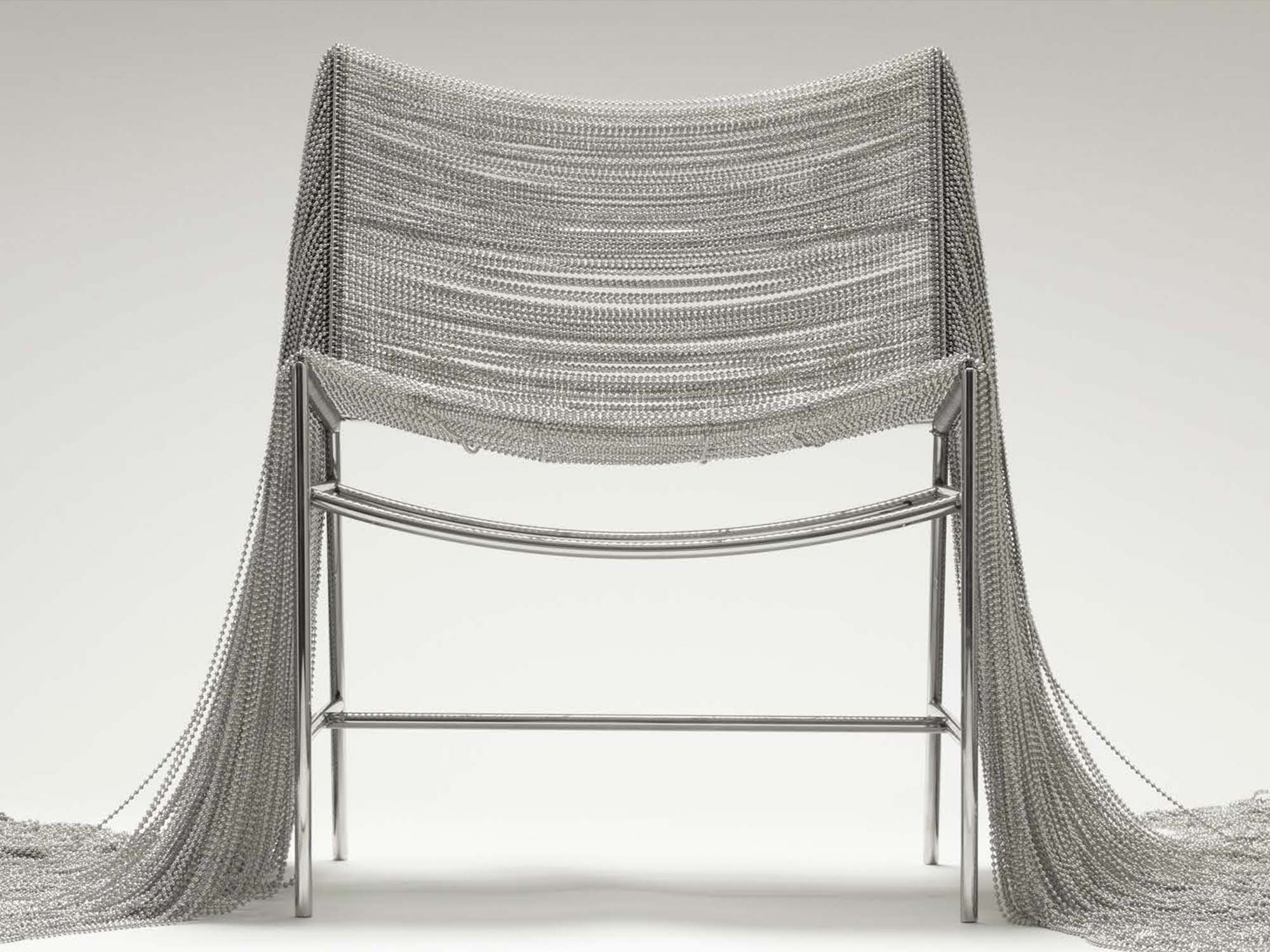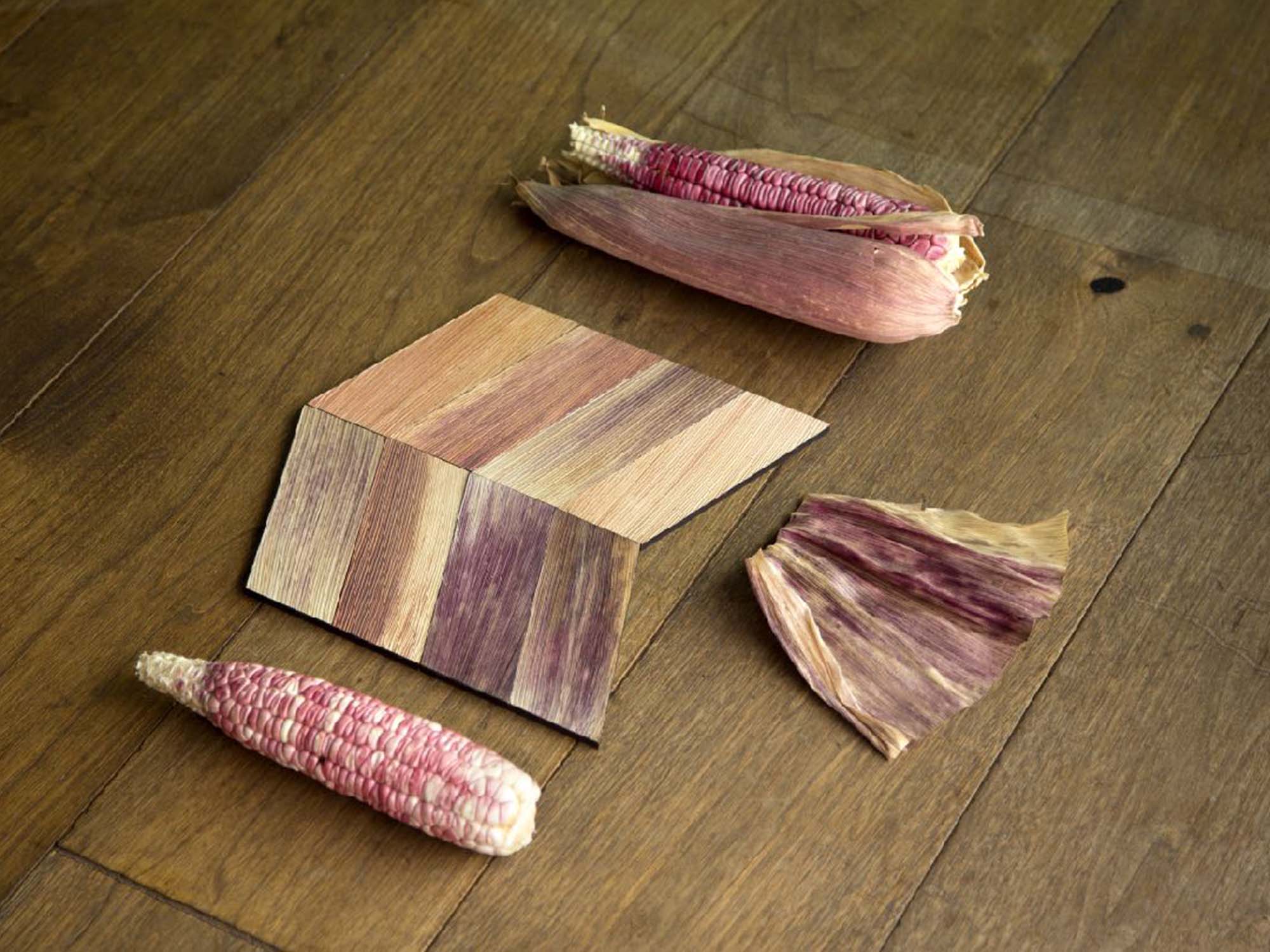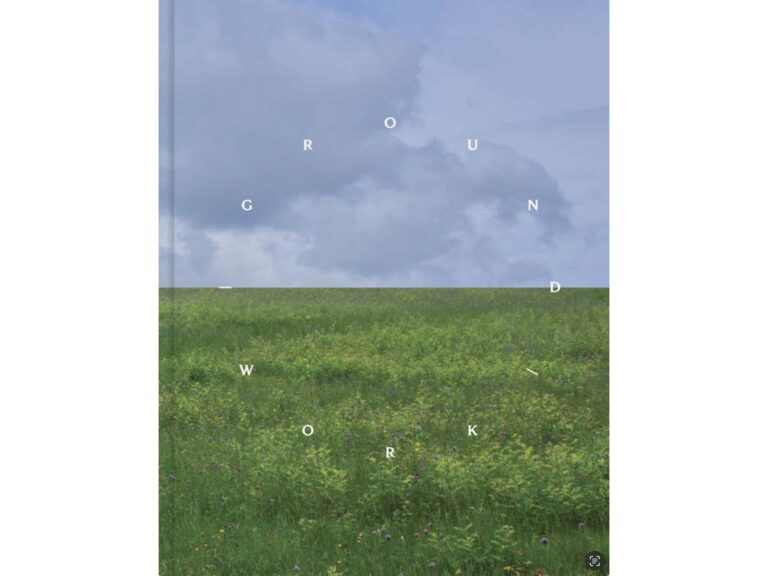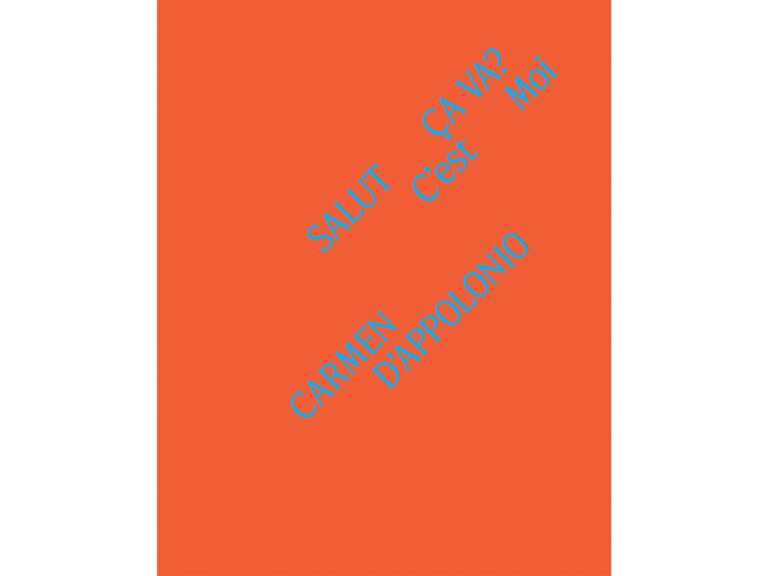Raphael Navot’s Parisian studio is a smart distillation of his tactile, sexy approach.
By Victoria Woodcock
We’re not allowed to call it an office,” Raphael Navot smiles as he looks around the Paris headquarters of his eponymous design studio: a courtyard apartment in the rightbank quartier of Montorgueil. The 48-year-old Israeli designer moved in last year having previously worked from home, giving life to the skylit space via warm, tactile materials that segue from a dark, mottled granite — the underground Paris hotspot he “DAVID Henry Moore sculptures ground to grow. The Netherlands was floor to honey-coloured shelves of triple- created with the late American film LYNCH within the museum garden perfect for me.” On graduation, the French layered oak, oxidised to a smoky shade.
It’s a supremely stylish hotbed of creativity. There are maquettes material samples on every surface, traces of an impressive output ranging from collaborations with brands such as Cappellini, Loro Piana and Roche Bobois, to designs for the interiors of Paris Hotel National des Arts ed Metiers. Navot was awarded Maison&Objet Designer of the Year in 2023, and yet his full-time team consists of only himself and his assistant, Fanny Flaminon. ““We’re like two octopuses doing everything,” he says of their working partnership. “And the studio is very new, but it’s also very home-like: there’s a kitchen, there’s a bedroom and there’s a bathroom. It’s not about an aesthetic so much as about use and mood.”
Navot set up his practice in 2003, but first made waves in 2011 with Club Silencio – the underground Paris hotspot he created with the late American film director, visual artist and musician David Lynch, which is named after the club in his film Mullholland Drive. They were brought together for the project by club owner Arnaud Frisch. Navot took his lead for the interior design from the cult director’s scenography and concept. “I used to go back and forth to his home in Hollywood, which was an amazing house by Frank Lloyd Wright Jr,” he recalls. “For me it was an interesting process, but it wasn’t always smooth, and at the beginning he really didn’t like my work because it was too elegant. He would really say that as an insult!”
Despite their differences, he and Lynch found their shared vision in a sexy, sleek and surreal aesthetic with retro-futurist furniture that was, says Navot, “purposefully uncomfortable”. He adds: “I wanted people to sit at the edge of the seat, to engage.” The project set a precedent for Navot’s burgeoning practice, with its use of natural materials and craftsmanship. “We used crafts like gilding and very complicated brasswork, which aren’t very common for an underground club.” Navot’s earliest influences were shaped by his upbringing in Jerusalem. “My dad was creative but not in the profession – he built our furniture, like my bed and my cupboards,” he recalls. But it was the Shrine of the Book at The Israel Museum – “a place where they keep the holy scrolls and is designed in this very beautiful white organic shape” – and the Henry Moore sculptures within the museum garden that really inspired his path. “I thought I was going to study architecture, but I got turned off by the responsibility,” he says. “So I chose design.”
He headed to the Design Academy Eindhoven in the Netherlands to study in 1999. “I come from Israel, a very contrasted and complex country with a lot of very strong opinions and battles,” he recalls. “When you don’t really know where you are or where you want to go, you need neutral ground to grow. The Netherlands was perfect for me.” On graduation, the French approach to craftsmanship lured Navot to Paris – and it is these practices that have come to define his work. He refers to himself as a “non-industrial designer”, a term he uses to underline his focus on the handmade over the mass-produced. He cites the Hôtel National des Arts et Métiers as a typical example, a project completed in 2017 where he worked with 30 artisans including “two elderly gentlemen, already drawing their pensions, who have a little factory that does woodwork. They needed a year to make 70 tables because it was a lot for them,” he smiles. A new Paris hotel with the same artisan focus is currently in the works.
Navot is also working on the Six Senses Quexigal Palace, a resort in the 16th-century country house of Spanish King Felipe II in the medieval city of Ávila, which is expected to open at the end of 2026. Working with Madrid-based architects Arvo Arquitectura on a heritage renovation has been rewarding for Navot. “We have very similar values,” he says of the project. “It’s ecological and sustainable in a way that it celebrates local materials. It’s barefoot luxury.” This is mirrored in his own designs, which include lights and sculptures incorporating original wine and olive oil vessels from the estate. Yee Pin Tan, head of design at Six Senses, has enjoyed being surprised by Navot’s original approach. “Raphael’s designs are tactile, fluid and undeniably sexy but never predictable,” she says. “There’s always an unexpected twist that makes his work truly unforgettable.”
For Marc Benda, co-owner of Friedman Benda Gallery in New York and Los Angeles, it is “the simplicity with which Raphael can convey very complex thought processes” that draws him to Navot’s work. They have worked together for the past seven years, showing standout pieces of collectable design: amongst them the sinuous, swooping oak Whale Armchair (2024); the bronze Clast (Stream) sculpture-coffee table (2022); and the curvacious velvet and bronze Entwined sofa (2022). “His seating is simply outstanding,” Benda says. When he joined the gallery, Navot was unsure of his place within Benda’s roster of cutting-edge designers. “I thought, ‘I’m the pretty stupid one of the class,’” he remembers. “I couldn’t really relate to what was happening in contemporary design and art, and considered myself a bit backwards. It took time to stop apologising for being interested in beauty.”
Today all Navot’s projects bear his signature – one that harks back to his early experiences of Henry Moore sculptures, which can be seen in the organic-shaped sofas and stools for Loro Piana Intérieur (an extension of which is being launched this summer) and the recent New Moon 260 sofa with Ateliers Jouffre, upholstered in a slubby, slate-coloured wool fabric by Pierre Frey. He’s recently added new landscape-inspired designs to his collaboration with French rug maker Diurne and a tableware collection with Belgian homeware brand Serax – a project with his “collective of friends”, restaurateur Julien Cohen and creative director Stephanie Cohen, which they call Uncharted.
The latter, he says, is a “more democratic” counterpoint to the five-star hotels and high-end design furniture he is known for. “It doesn’t really matter if it’s clay or if it’s bohemian glass, it’s always an interesting challenge for me,” he says. In his studio, he often works with clay to get his creative juices flowing. “I’ll do really normal things like cups, which are such a relief because most of my work is so sensational. It really calms me down.” It’s important to Navot that his designs are felt as well as seen. “Whether you’re coming to a hotel or a bar, to a spa or to your bed, [the experience] should be remarkable without being overwhelming,” he says. “It needs to be something that you haven’t seen, yet feels familiar.” Whether it’s one of his spaces or a piece of his furniture, “your body has to say, ‘Yeah, I get that.’”

